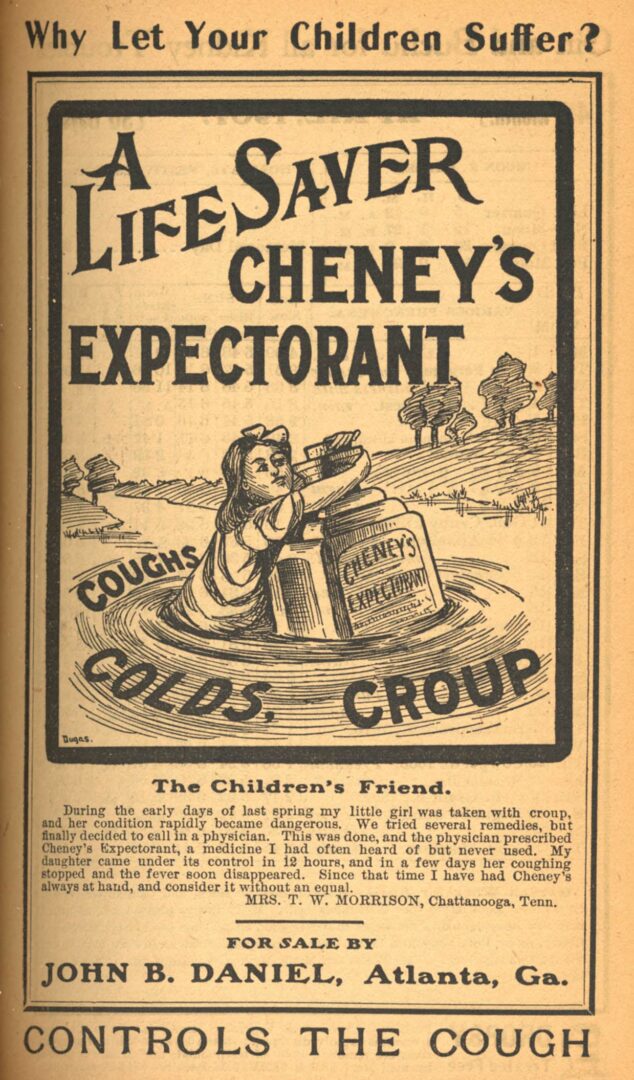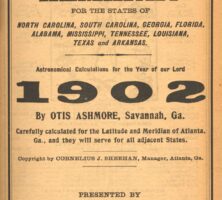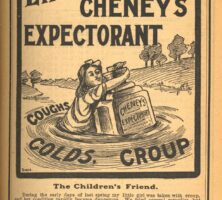Published continuously since 1807, Grier’s Almanac is one of Georgia’s longest-running publications. The annual reference work once referred to as a “Bible for the southern antebellum farmer” enjoys a circulation of around 3 million in twelve southern states and is distributed via leading drug and feed-and-seed stores as well as by direct mail.
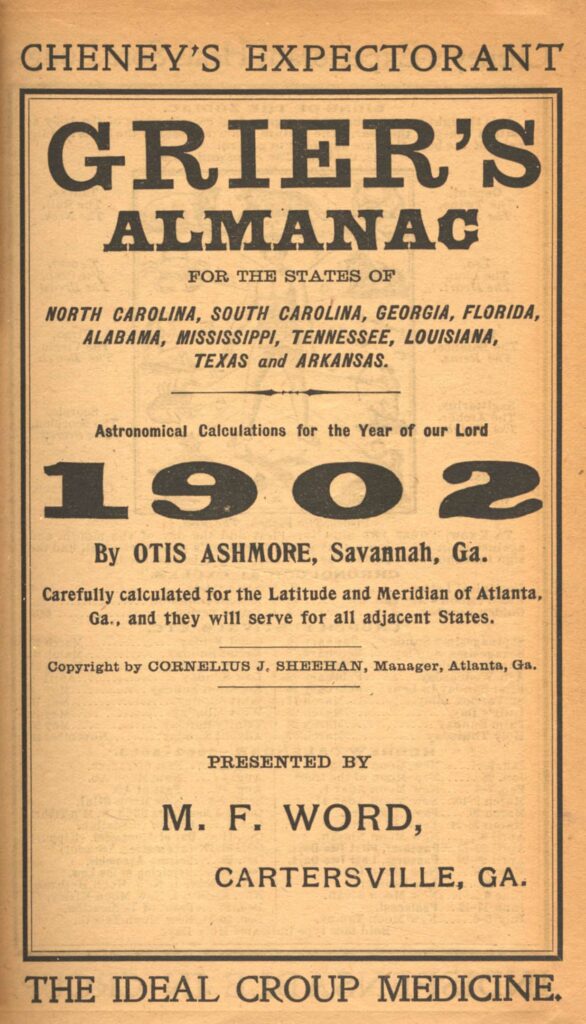
Courtesy of Hargrett Rare Book and Manuscript Library, University of Georgia Libraries.
Robert Grier (1780-1848), an amateur astronomer, made his astronomical calculations for the publication, originally known as the Georgia and South-Carolina Almanak, on the plantation property of his father, Aaron W. Grier Sr., a general in the Revolutionary War (1775-83). The plantation was located near the small towns of Raytown and Sharon in what is now Taliaferro County (then Wilkes).
Though not formally educated as a youngster, Grier possessed an insatiable appetite for knowledge and read extensively from his father’s library, becoming proficient particularly in mathematics. Captivated by astronomy, Grier was able to predict with consistent accuracy the rising and setting times of the sun, lunar eclipses, and phases of the moon. These predictions and general weather trends were the almanac’s primary content, benefiting the many farmers of the rural South who came to rely on the publication.
In addition to publishing his almanac, Grier was instrumental in raising one of Georgia’s most noted political figures. His sister, Margaret, died just months after the birth of her son, Alexander Stephens, in 1812. The death of Stephens’s father and stepmother in 1826 left Robert Grier to play an even greater role in the rearing of “Little Aleck,” who would eventually become vice president of the Confederate States of America. Following somewhat in his uncle’s footsteps, Stephens even entered the world of publishing, becoming part owner and political editor of the newspaper the Atlanta Sun, or Atlanta Weekly Sun, in the early 1870s. Meanwhile Robert Grier enjoyed a very lucrative career with his almanac. He died at his Butts County home on May 4, 1848.
A string of owners and editors have kept the popular almanac, eventually renamed Grier’s Almanac, alive. Having served as editor for almost half a century, Thomas P. Ashmore was succeeded in 1882 by his nephew Otis Ashmore, who was the Savannah superintendent of schools as well as an author, educator, and scientist. During his tenure from 1882 to 1934, however, the publication experienced financial turmoil, prompting a bankruptcy auction of the business on the Chatham County courthouse steps in downtown Savannah in 1912. Frank Lamar Fleming happened upon the public sale while in town on business. On the spot, he purchased the almanac on behalf of John B. Daniel Inc., the Atlanta wholesale drug company he owned with his brother, P. L. Fleming.
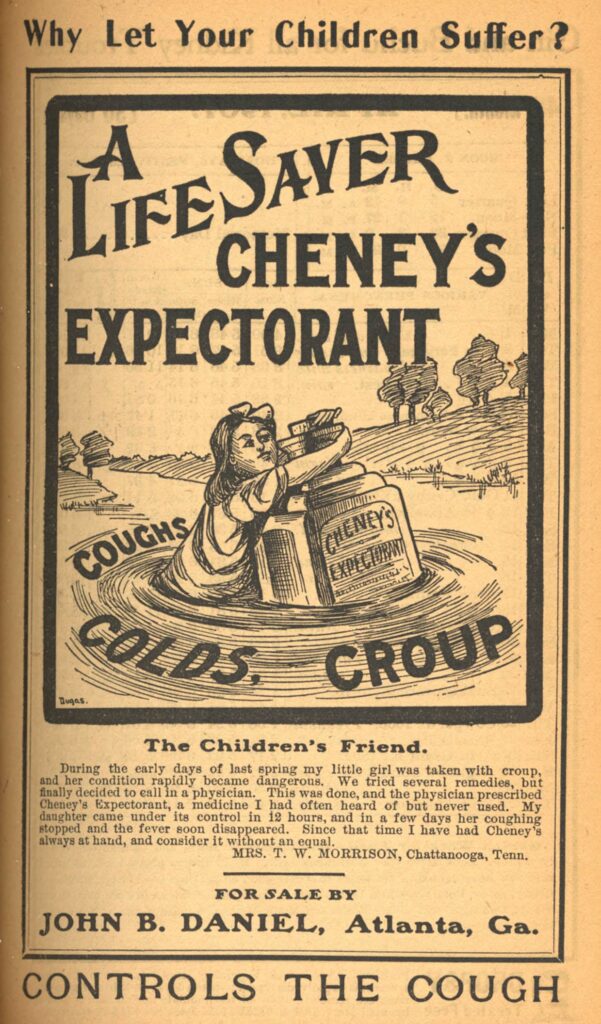
Courtesy of Hargrett Rare Book and Manuscript Library, University of Georgia Libraries.
The Bergen Brunswig Drug Company acquired John B. Daniel in 1979, but Frank L. Fleming’s daughter, Hayden Garges, retained possession of the almanac. Since 1985 Atlanta-based Grier’s Almanac Publishing Company has been under the ownership and management of Bryan and Leslie Bachler, the daughter of Garges.
A typical modern-day issue of Grier’s Almanac contains a complete gardening calendar, zodiac information, tips for anglers, heirloom recipes, a chronological listing of historic events, and sections devoted to health and religion.






